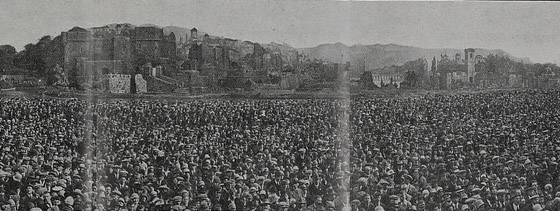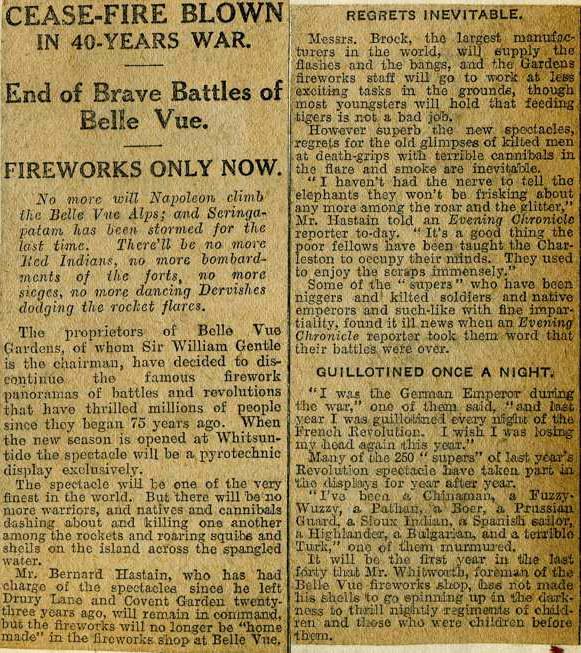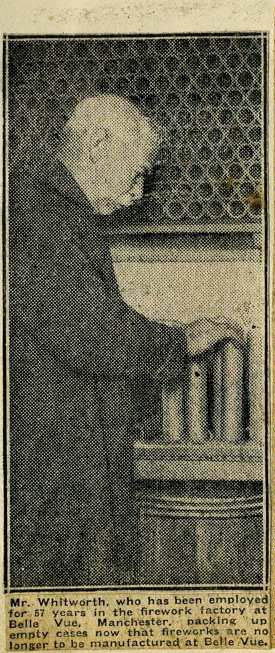|
My personal memory of the firework displays at Belle Vue is of "The Storming of Quebec", a drama which would not play well in Canada in the nineties. I strongly suspect that the modern day Quebecois would take offense at the routing of the French garrison by James Wolfe and his army of English troops and their Indian allies. In Manchester in the 50s it was a big hit and I cheered with everyone else when the English army came out victorious after a dramatic 30 minute battle for the Citadel. Maybe it even had a lasting affect on some of the people in the audience because I now live in Canada and my mate Bill wants to go to Quebec City because he's always wanted to see it after watching the firework display.  John Jennison started the
firework displays at Belle Vue. They actually started in
1842 but the large dramatic productions were stimulated,
as with many of the attractions at Belle Vue, by
Jennison's visit to the Great Exhibition at the Crystal
Palace. It was on that trip that he visited a zoo in
Surrey that had firework displays and on his return
Jennison set in motion a plan to increase the scale of
his displays. In true Jennison style he didn't go in for
half-measures. He hired George Danson, who had worked
for the Surrey zoo, to come and create the sets for
displays that were re-enactments of important historical
events. Danson constructed huge backdrops on the
firework island that formed the setting for the dramas
that were acted out by large casts of "extras".
It is said that most of
the participants in the dramas were local people hired
for the occasion and paid, in part, with some of
Jennison's beer. Some of the "actors" though were Belle
Vue employees. Janice Watts' grandfather was Syd Lane, a
commercial artist who worked for Belle Vue in the 50s,
and her family remembers him not only working on the set
for "The Storming of Quebec", but actually having a part
in it. The scenery for the displays was built on the firework island and was known as "The Picture" and it was indeed huge, covering 30,000 square feet of canvas (see above). Across the small lake from the island, on which the action took place, Jennison built a viewing stand capable of seating an audience of 400. 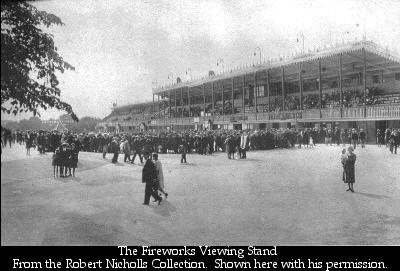 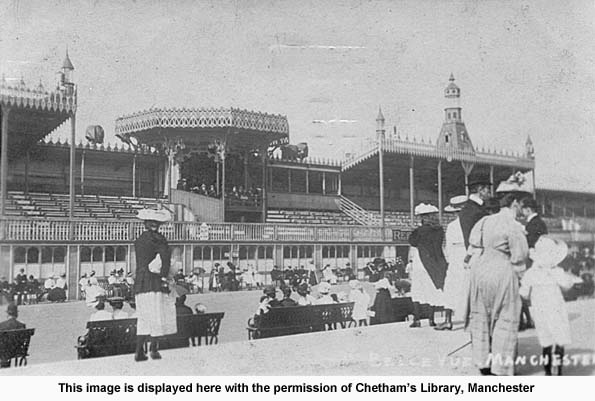 However, I know that in my
day the crowds were much bigger than that and most of
the audience stood in the space between the lake and the
viewing stand, a space once occupied by the outdoor
dance floor (shown above). 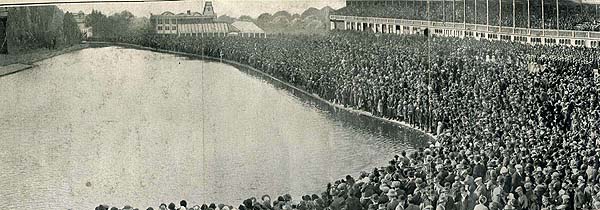 At one point the
Jennisons, who already had their own brewery, bakery,
brickworks, and hotels, had a firework factory on site
to produce the pyrotecnics for the shows.
Below: Bernard
Hastain painting the scenery for the 1929
presentation. That year they painted a backdrop
depicting Vimy Ridge.
The first of the large
dramatic displays was "The Bombardment of Algiers". The
scenery in the photograph at the top of this page was
for the 1904 display entitled "The Attack on Port
Arthur". The "Storming of Quebec" was acted out in 1954.
The last of these displays was "Robin Hood" in 1956,
after which the dramatic performances were replaced by
more conventional displays. They continued in this form
until 1969, when one of the reasons given for cancelling
them was that they were frightening the animals in the
zoo. Ironic really that this hadn't been considered in
the previous 100 years. OTHER LINKS The photograph of Belle Vue is shown here with the generous permission of Graham Beech of Sigma Leisure. The photograph comes from the Chris Makepeace book, "The Villages of Manchester", which is available from Sigma Books. This photograph may not be reproduced, stored in a retieval system, or transmitted in any form or by any means - electronic, mechanical, photocopying, recording, or otherwise - without permission from the publisher. The Villages of Manchester is just one of a series of books with a shared theme of Postcards from the Past. You should check-out Sigma's fine collection of books. All the material on this web site is © David Boardman, unless otherwise stated, and may not be copied, downloaded or otherwise reproduced or retransmitted without the written permission of the webmaster. Any contravention of the copyright of others is unintentional and will be corrected immediately when brought to the attention of the webmaster. |

